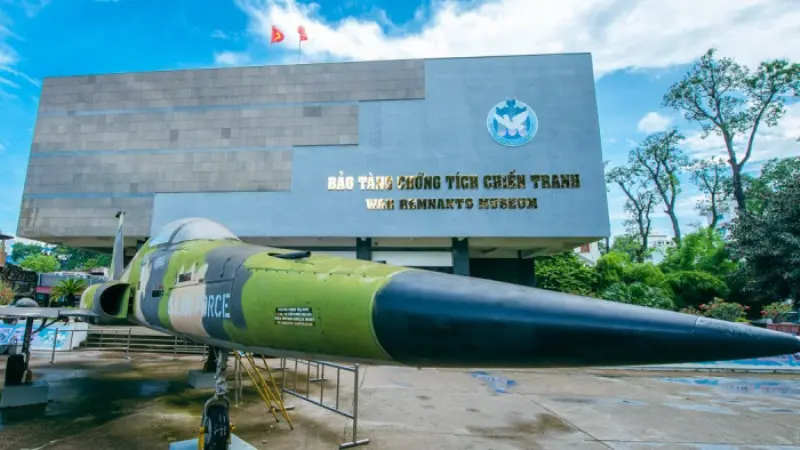Vietnam is a country that bears the markings of a tumultuous past. From a range of historical monuments and preserved sites, the War Remnants Museum in Ho Chi Minh City is one that tells a poignant tale of resilience and remembrance.
Serving as a stark reminder of the long and brutal Vietnam War, the museum holds an array of artifacts, photographs, and narratives, offering a visceral insight into one of the most significant periods in Vietnam’s history.
This article provides a detailed view of the museum’s historical context, compelling reasons to pay a visit, its geographical location and access routes, the best time to explore it, and the significant exhibits on display.
History of the War Remnants Museum
Officially opened on September 4, 1975, the War Remnants Museum was initially called “The House for Displaying War Crimes of American Imperialism and the Puppet Government”.
Over time, the museum has undergone several name changes, reflecting the evolving relationship between Vietnam and the United States. However, its primary purpose – to present the atrocities of the Vietnam War to local and international visitors – has remained consistent.
The museum is a significant institution for the preservation and presentation of tangible heritage, showcasing the repercussions of the war and how it shaped the future of Vietnam. Over the years, it has drawn in millions of visitors, making it one of the most frequented sites in Ho Chi Minh City.
Why Visit the War Remnants Museum?
The War Remnants Museum stands as an important testament to the Vietnam War. A visit here is not merely a tour through a collection of war relics, but rather an immersive journey into Vietnam’s turbulent past.
The museum offers a first-hand look at the brutal realities of war, presenting a profound perspective that challenges us to question the cost of conflict and appreciate the value of peace.
For those interested in history and geopolitics, the museum provides invaluable insight into the Vietnam War, its causation, execution, and aftermath. By showcasing the experiences of those affected, the museum helps to humanize the narratives that have often been distilled into statistical data.
For others, it serves as a potent reminder of the resilience of the Vietnamese people, highlighting their strength and spirit amid adversity.
Location and Route
The War Remnants Museum is situated in District 3 of Ho Chi Minh City, one of the most vibrant and culturally-rich regions of Vietnam’s largest metropolis. The museum is centrally located and can easily be reached from various parts of the city.
If you’re starting from the city center, a short 10-minute taxi or Grab ride will take you to the museum. Alternatively, if you’re up for a more authentic city experience, consider renting a motorbike or taking a local bus. There are also various city tours available that include the War Remnants Museum as part of their itinerary.
When to Visit
The museum is open throughout the year and welcomes visitors from Tuesday to Sunday, between 7:30 AM and 5 PM. The best time to visit would largely depend on your personal preference.
If you prefer a quieter atmosphere to absorb the weighty subjects the museum presents, consider visiting early in the morning when it opens. This way, you can avoid larger tourist groups that usually arrive later in the day.
What to See
The War Remnants Museum houses a vast array of exhibits spread across various themed rooms and outdoor areas. Some of the key highlights include:
1. Tiger Cages
A reconstruction of the prison cells used during the war to house Viet Cong prisoners, offering a glimpse into the harsh conditions endured by the captives.
2. Historical Truths
An exhibit that presents photographs, documents, and personal accounts detailing the atrocities of the war.
3. Requiem Exhibition
A poignant collection of wartime images captured by photographers who lost their lives during the conflict.
4. Artifacts
The museum’s courtyard displays a collection of military equipment, including tanks, jets, helicopters, and artillery, used during the war.
5. Effects of Agent Orange
A heartbreaking yet crucial exhibit showing the devastating impacts of Agent Orange, a defoliant used by the U.S. during the war, on the Vietnamese people and environment.
The War Remnants Museum stands as a solemn testament to the devastating impacts of war and the indomitable spirit of the Vietnamese people. With its thought-provoking exhibits and historical insights, a visit to this museum promises to be an enriching and moving experience, leaving a deep and lasting impression.








